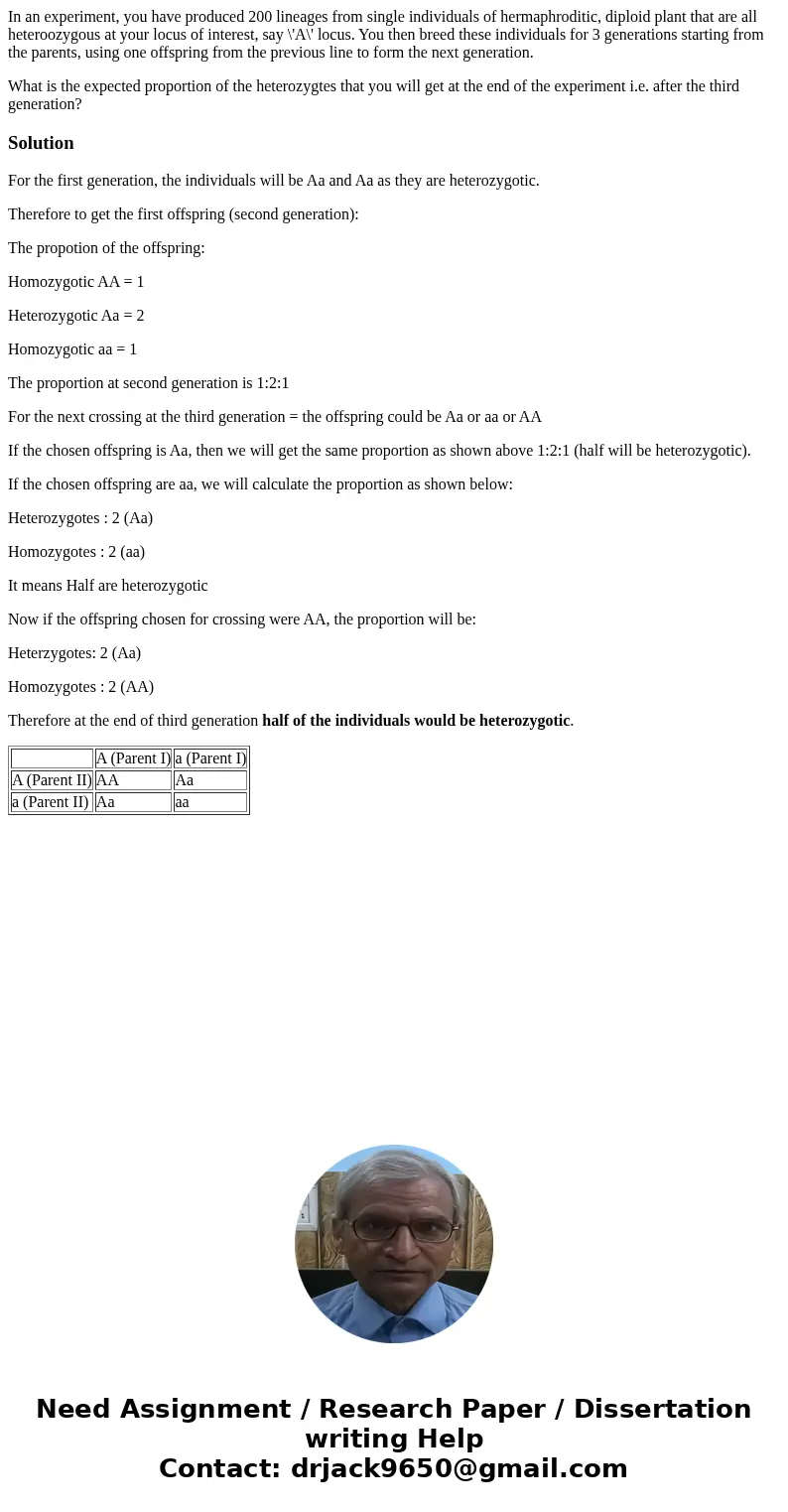In an experiment you have produced 200 lineages from single
In an experiment, you have produced 200 lineages from single individuals of hermaphroditic, diploid plant that are all heteroozygous at your locus of interest, say \'A\' locus. You then breed these individuals for 3 generations starting from the parents, using one offspring from the previous line to form the next generation.
What is the expected proportion of the heterozygtes that you will get at the end of the experiment i.e. after the third generation?
Solution
For the first generation, the individuals will be Aa and Aa as they are heterozygotic.
Therefore to get the first offspring (second generation):
The propotion of the offspring:
Homozygotic AA = 1
Heterozygotic Aa = 2
Homozygotic aa = 1
The proportion at second generation is 1:2:1
For the next crossing at the third generation = the offspring could be Aa or aa or AA
If the chosen offspring is Aa, then we will get the same proportion as shown above 1:2:1 (half will be heterozygotic).
If the chosen offspring are aa, we will calculate the proportion as shown below:
Heterozygotes : 2 (Aa)
Homozygotes : 2 (aa)
It means Half are heterozygotic
Now if the offspring chosen for crossing were AA, the proportion will be:
Heterzygotes: 2 (Aa)
Homozygotes : 2 (AA)
Therefore at the end of third generation half of the individuals would be heterozygotic.
| A (Parent I) | a (Parent I) | |
| A (Parent II) | AA | Aa |
| a (Parent II) | Aa | aa |

 Homework Sourse
Homework Sourse